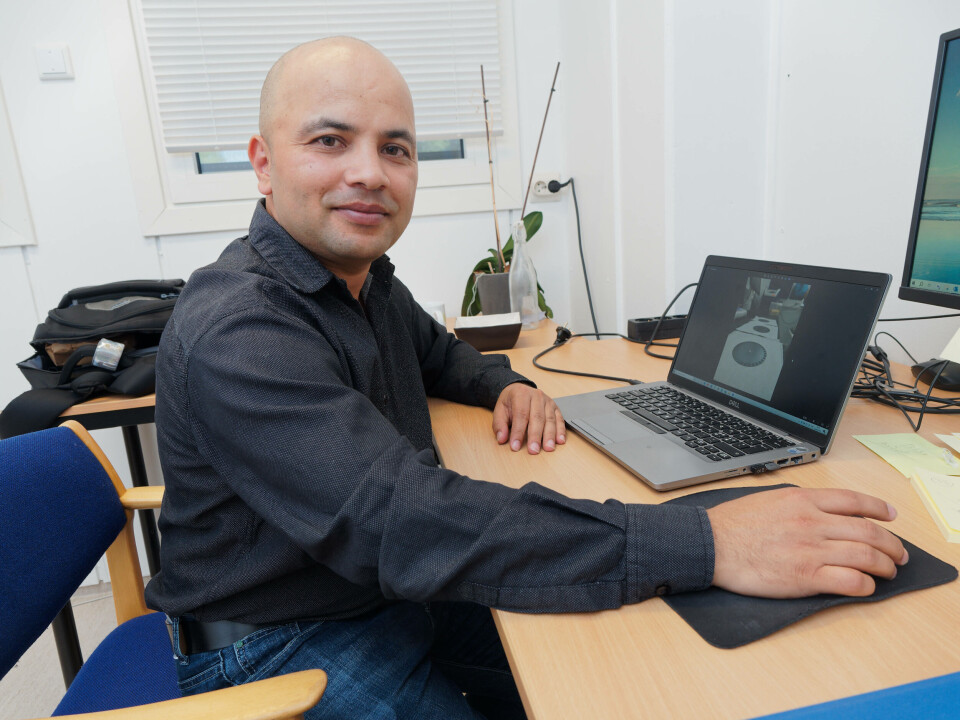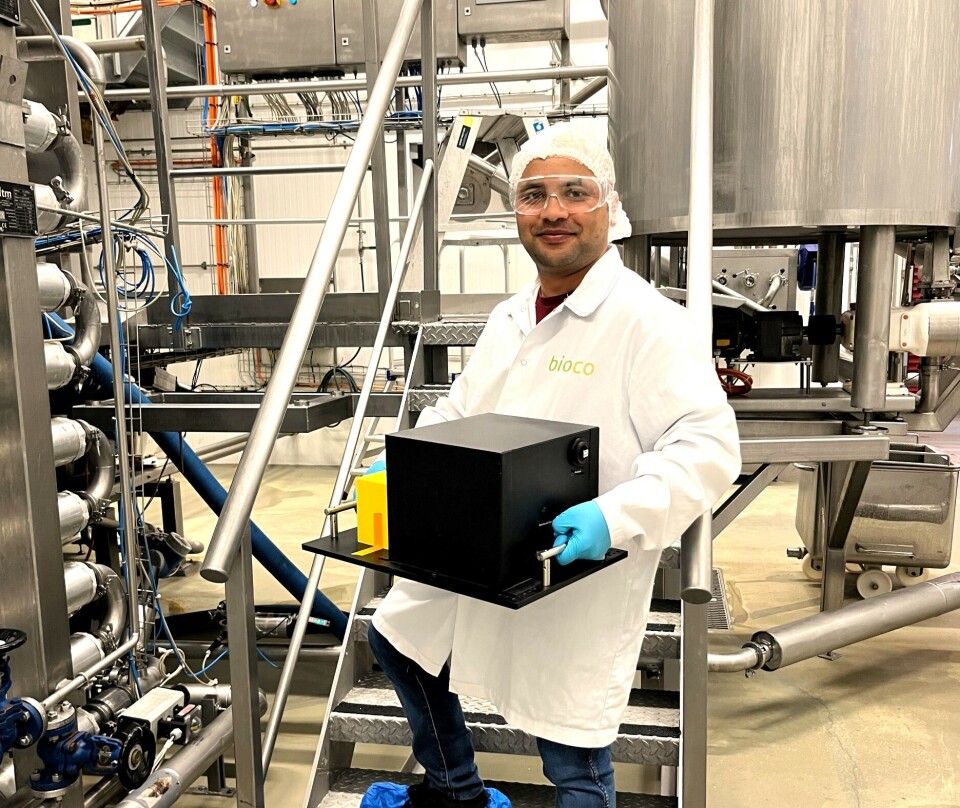THIS CONTENT IS BROUGHT TO YOU BY Nofima The Norwegian Institute of Food, Fisheries and Aquaculture Research - read more

Can food and residual raw materials become medicine?
Can turkey carcasses or fish bones be used for medicine? Is milk suitable for making cheese? Protein measurements can provide answers, and Bijay Kafle measures food proteins in a new and better way.
Bijay Kafle has looked at analyses to measure the quality of food, residual raw materials, and beverages.
“My focus is proteins in food. It takes a lot of time to measure fats, proteins, and sugars in food with conventional methods,” he says.
Proteins
Instead, he works with a technique called FTIR spectroscopy, which stands for Fourier Transform Infrared Spectroscopy.
“It's a very fast technique. It only takes a few seconds to analyse a sample,” says Kafle.
Infrared spectroscopy means that what is to be analysed is irradiated with infrared rays. Some of the rays pass through, while some remain in the sample – they are absorbed.
The substances that food contains, such as proteins, fats, and carbohydrates, absorb wavelengths that are completely different from substance to substance. Which wavelengths are absorbed indicates which chemical substances are present in the sample.
Fingerprint
“The FTIR analysis provides a chemical fingerprint of a sample. Fat has its fingerprint, sugar has its own, and so do the proteins,” he says.
The measurements reveal much more than just how much protein, fat, and sugar a sample contains. They can also provide information about the composition of the proteins and the types of fat and sugar present.
Removing the water
Bijay Kafle has worked with proteins that are relevant to the food and bioprocess industries. He has managed to measure them easier and faster than what is possible with other instruments.
“My doctoral thesis is about using FTIR based on so-called dry film analysis,” he says.
This means he creates a thin, dry film of a sample before the analysis. He places the film on a silicon plate that the infrared rays can penetrate.
When protein samples are dissolved in water, the problem is that the water interferes with the measurements. Water absorbs infrared light in the same wavelength ranges as the substances being measured. As a result, the outcomes are not accurate.
“That's why we want to dry the samples. In other FTIR analyses, we often measure the liquid and subtract the signals that come from the water. When we analyse dry films, the water is physically removed,” says Kafle.
This means that the disturbances from the water are minimal and that the measurements of the proteins are more accurate.

Bumble Bee
Kafle has not only worked with theory. Together with colleagues at SINTEF, he has also worked on designing and developing a portable FTIR system based on dry film analyses.
The result is a yellow and black box, small enough to be carried to where it is needed. His colleagues call it Bumble Bee.
“Yes, there were some who thought it looked like a bumblebee. It can fly from industry to industry for sample measurements,” smiles Bijay Kafle.
He has tested Bumble Bee on samples from fish, chicken, and turkey. These are the carcasses left after the parts that can be turned into food or feed have been utilised.
“The industry uses these residual raw materials to obtain valuable substances: peptides, free amino acids, and fats. They are used for animal feed and for food. We measure quality so that the quality of the products is stable and it's possible to find new markets in the future,” he says.
The measurements are better
Dry film analysis provides more reliable results than other FTIR methods, both when the samples come from poultry and salmon.
For example, they show how there is more collagen – a protein so important for the body that it is sold as a dietary supplement – in the residual raw material from turkey than in similar remains from chicken.
In milk, the measurements not only show what types of proteins are present and their compositions, but also how healthy the cow is.
“This means that dry film FTIR can be used in the dairy industry, but also on the farm, now that there is a portable instrument,” Kafle says.
Ready for industry
The plan is to use the Bumble Bee in the food industry, for example, to find out which raw materials can become important dietary supplements or even pharmaceuticals.
The instrument has been tested thoroughly, and it turns out to be just as good as today's large, laboratory-based, expensive instruments.
“This means that it's ready to be used in the industry,” Bijay Kafle concludes.
References:
Kafle et al. Fourier-transform infrared spectroscopy for characterization of liquid protein solutions: A comparison of two sampling techniques, Vibrational Spectroscopy, vol. 124, 2023. DOI: 10.1016/j.vibspec.2022.103490.
Kafle et al. From laboratory to industrial use: Understanding process variation during enzymatic protein hydrolysis with dry film fourier-transform infrared spectroscopy, Food Control, vol. 164, 2024. DOI: 10.1016/j.foodcont.2024.110577
Måge et al. The role of biospectroscopy and chemometrics as enabling technologies for upcycling of raw materials from the food industry, Analytica Chimica Acta, vol. 1284, 2023. DOI: 10.1016/j.aca.2023.342005

This content is paid for and presented by Nofima The Norwegian Institute of Food, Fisheries and Aquaculture Research
This content is created by Nofima's communication staff, who use this platform to communicate science and share results from research with the public. Nofima is one of more than 80 owners of ScienceNorway.no. Read more here.
More content from Nofima:
-
Red algae grown in wastewater from fish-farming facilities could become sustainable salmon feed
-
Pumpkins are good for more than just Halloween decorations
-
This is how temperature affects a salmon's health and growth
-
Study: Omega-3 and zinc is a powerful duo for salmon
-
Fish may turn yellow if frozen too fresh
-
Is it better if food is packaged in plastic or paperboard?





































